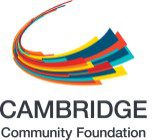Equity and Innovation Report
Chapter 3: Fourth Quintile


Overview
The fourth 20 percent of the population by income looks much like it did a decade ago, with higher-income households of predominantly white, well-educated, mid-career professionals. But subtle differences reflect the city’s broader changes: the loss of families with children has increased the number of “double-income, no kids” households; middle-skilled adults have been replaced by those with higher credentials; and, most notably, the fourth quintile is now the heart of the innovation-economy workforce.
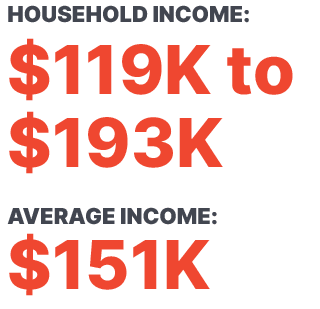
Neighborhoods with the greatest share of households in the fourth quintile



Sources: 2005–2009 and 2014–2018 American Community Survey 5-Year Estimates.
Chart 3.4: Share of Working Adults Employed in Innovation Occupations, 2018
The fourth quintile is the core of Cambridge’s innovation economy workforce.
People and Households (2009-2018)
The fourth quintile remains overwhelmingly white. Black and Latinx residents are significantly underrepresented, comprising just 5.2 percent and 6.7 percent of the population, respectively. Although this quintile has seen an uptick in millennials aged 25 to 34, mid-career and older adults in the workforce nevertheless make up nearly a third of the population. The share of households with children decreased, while the “double-income, no kids” households rose. In fact, nearly 60 percent of all households are either married couples with no children or nonfamily households not living alone, including unmarried partners and adult roommates.
Over the past decade, the average household income for the fourth quintile of households increased by 23 percent.
Race/Ethnicity
Relatively little change in racial/ethnic diversity
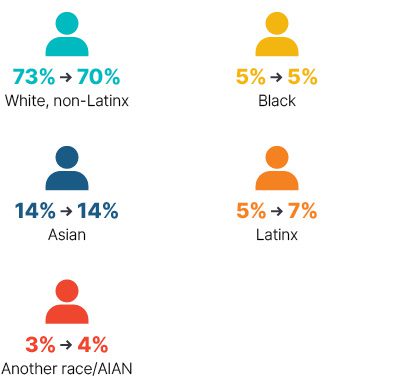
Age
Mostly young workforce
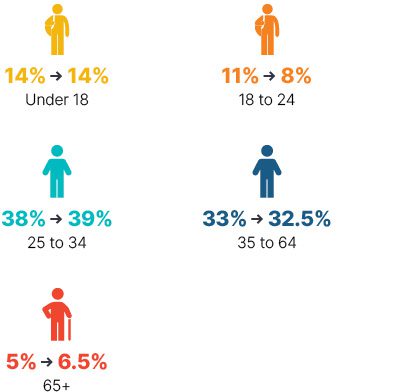
Household Type
More married couples without children
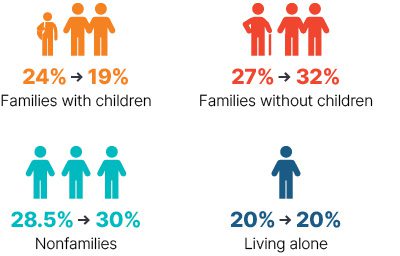
Sources: 2005–2009 and 2014–2018 American Community Survey 5-Year Estimates.
Housing and Community (2009-2018)
The fourth quintile saw the rise of the high-income renter household and a decreased cost burden for both renters and owners. Household stability is greater than in the lower tiers, with a plurality having lived in their current home two to 10 years (although fewer have lived in their home 10 years or more). Among recent movers, the share from another location in Massachusetts decreased, although this was partially offset by an increase in movers coming from other states.
Tenure
Increase in renter households
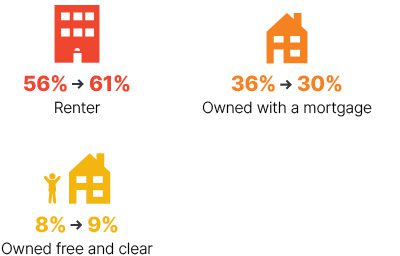
Cost Burden (>30%)
Very low levels of housing cost burden

Lived in Current Home for:
More mid-term housing stability
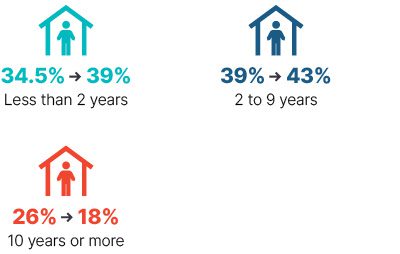
Movers Coming from:
Fewer local movers
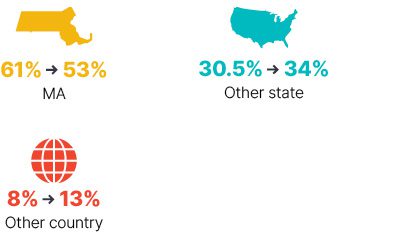
Sources: 2005–2009 and 2014–2018 American Community Survey 5-Year Estimates.
Education and Jobs (2009-2018)
The fourth quintile lost most of its low- and middle-skilled adults, whose place has been taken by those with higher educational attainment levels; the share of fourth-quintile adults with a master’s degree or higher rose from 45.6 percent to 56.3 percent over the decade. Most workers are in the private sector. Workers in nonprofits increased slightly; workers in government decreased. Nearly a third of working adults are in innovation-cluster occupations. More than a third of all innovation economy workers are in this quintile.
Educational Attainment
Sharp increase in highly educated adults
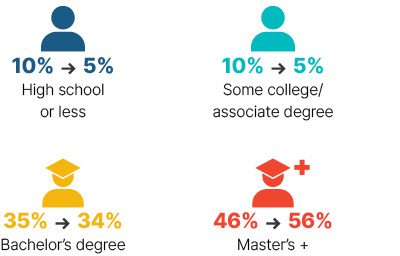
Top Occupations
Highest employment in innovation occupations

Employment Sector
Largest drop in adults working in government
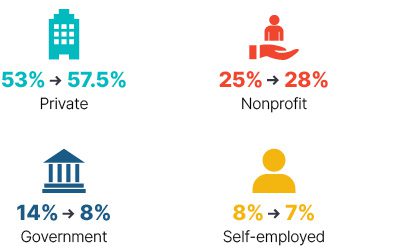
Sources: 2005–2009 and 2014–2018 American Community Survey 5-Year Estimates.
We have adjusted the standard naming conventions established by the U.S. Census Bureau in the following ways: “Hispanic/Latino” ethnicity is referred to as “Latinx”; “Black” refers to “Black/African American”; “Asian” includes “Native Hawaiian/Pacific Islander”; “Multiracial” refers to “Two or More”; and “Another race/AIAN” includes “Some Other” and American Indian/Alaska Native.” For more about our terminology on race and ethnicity »
